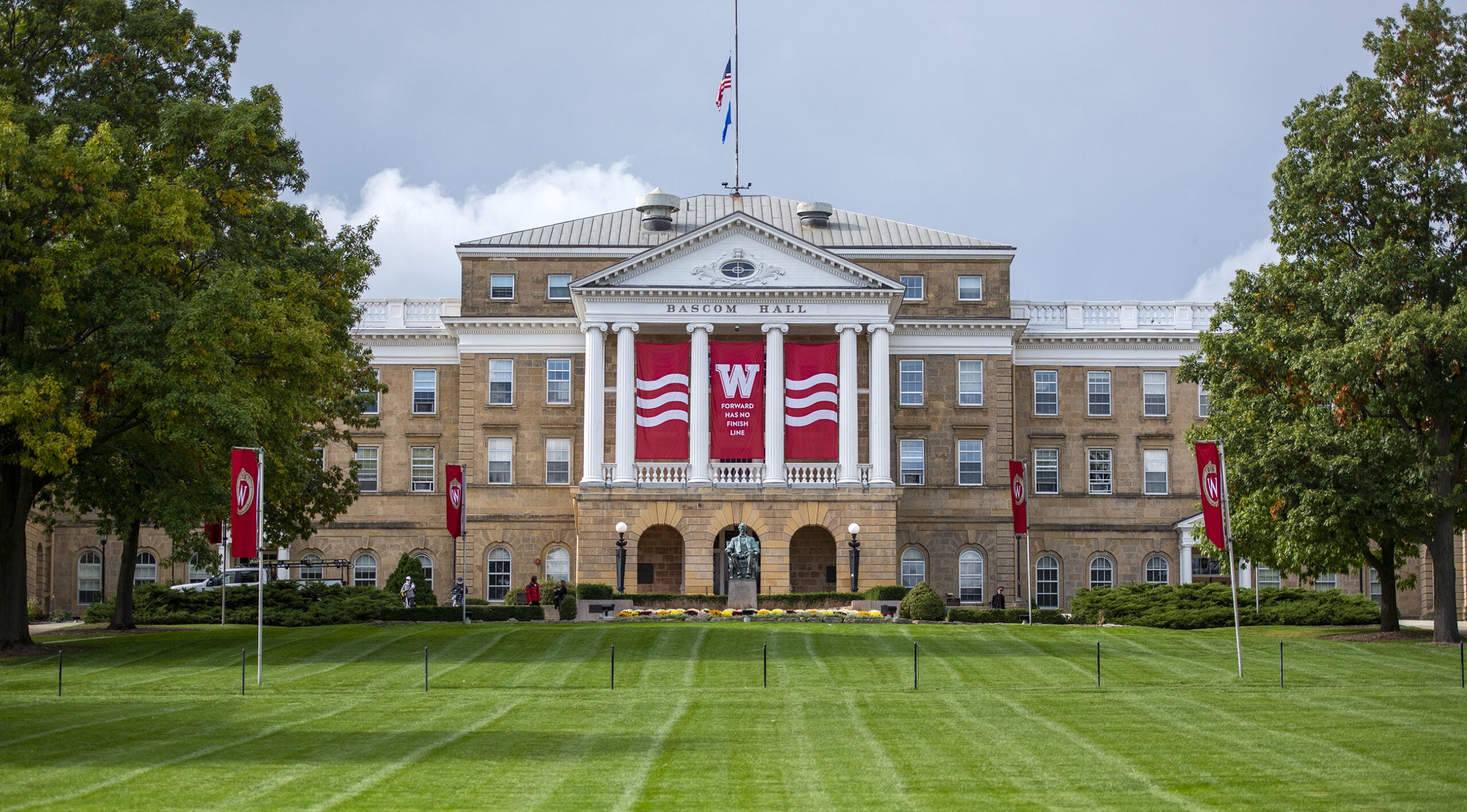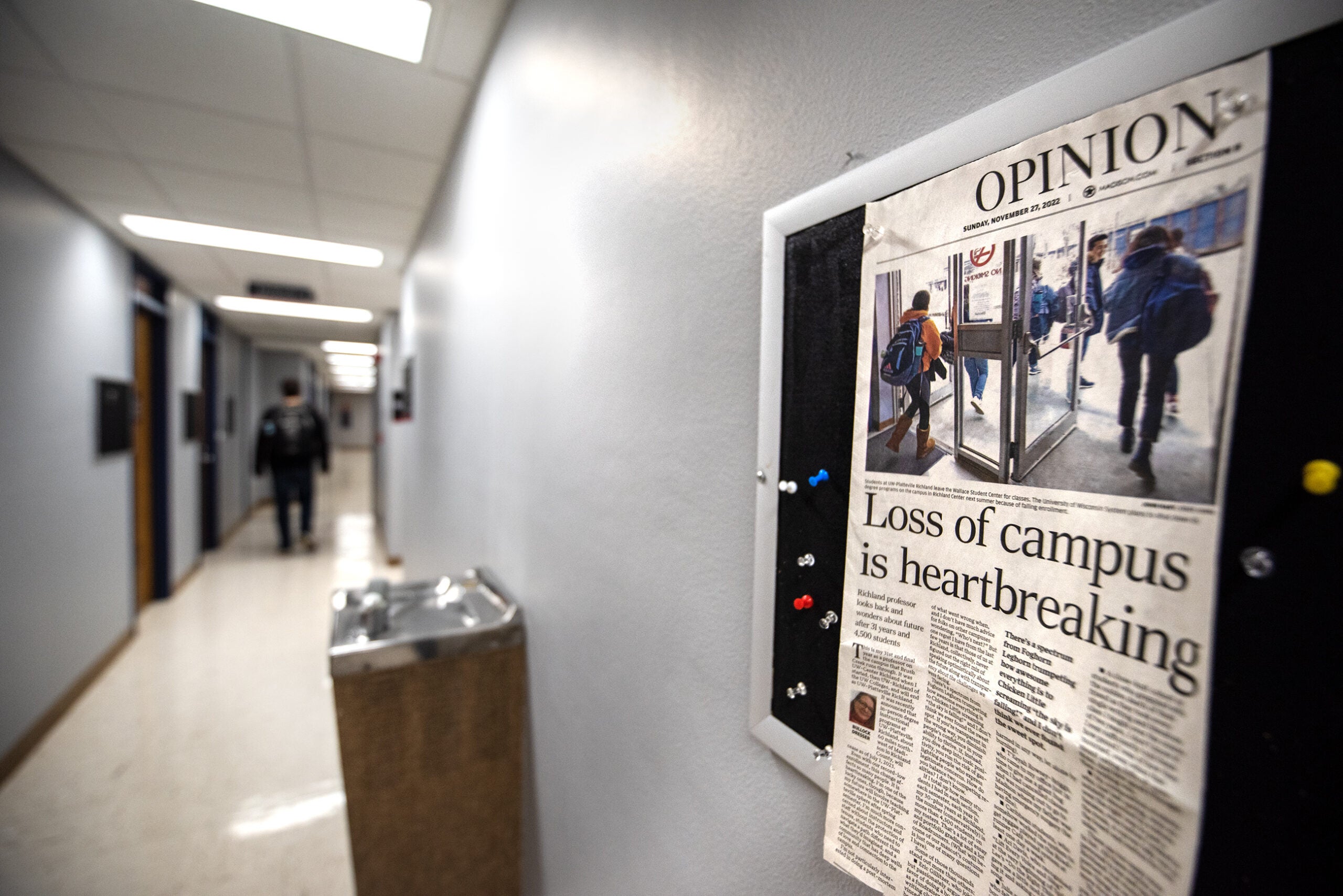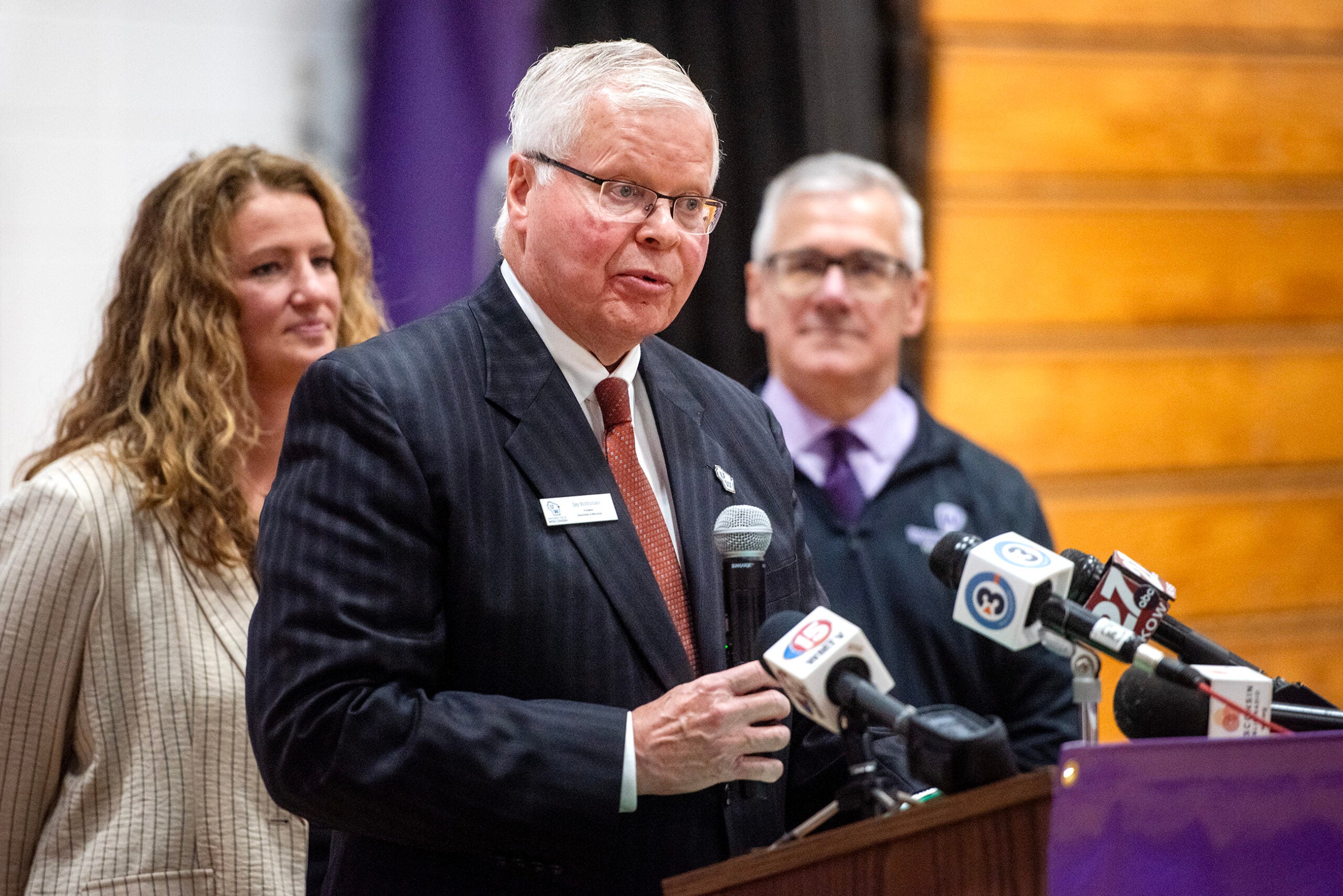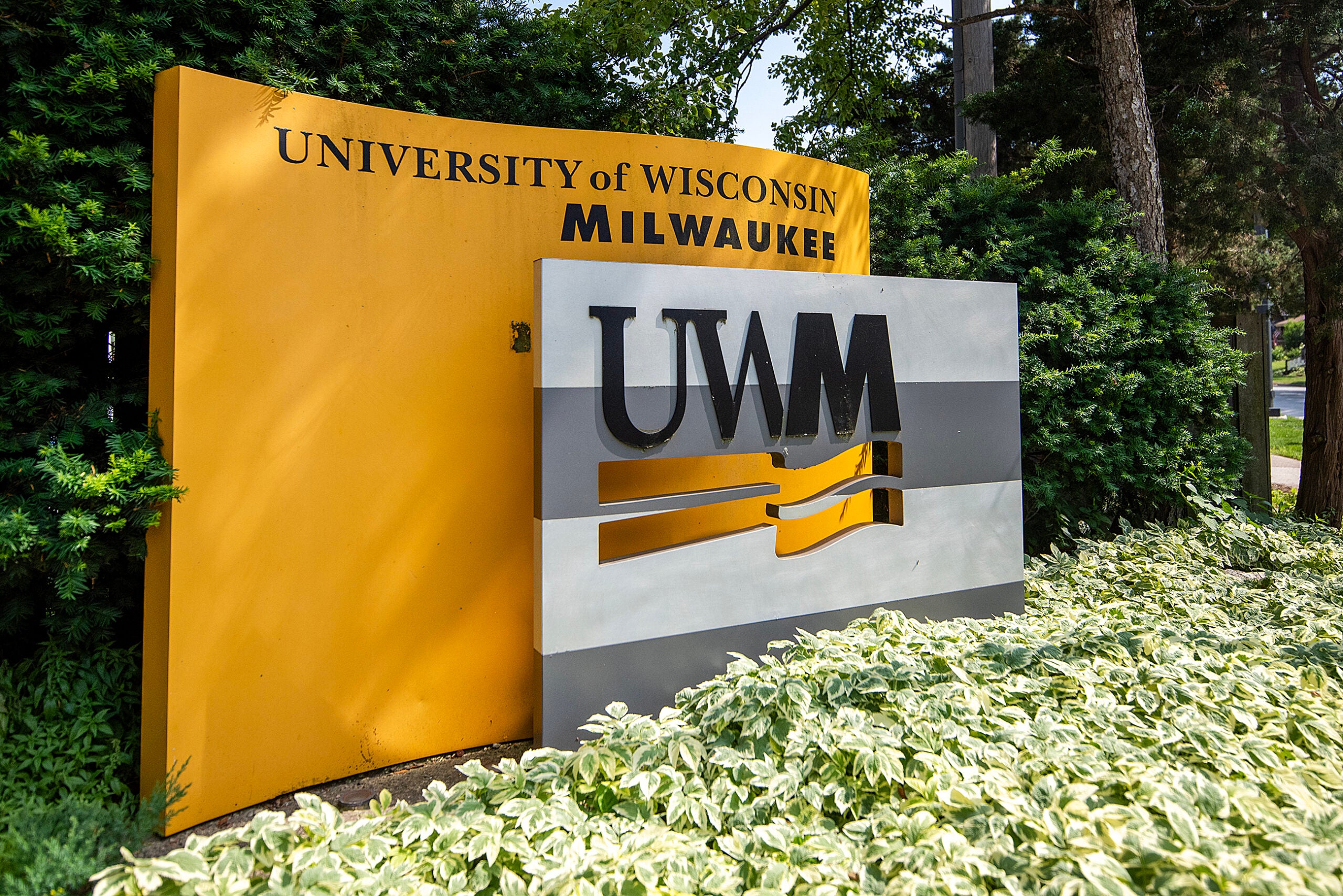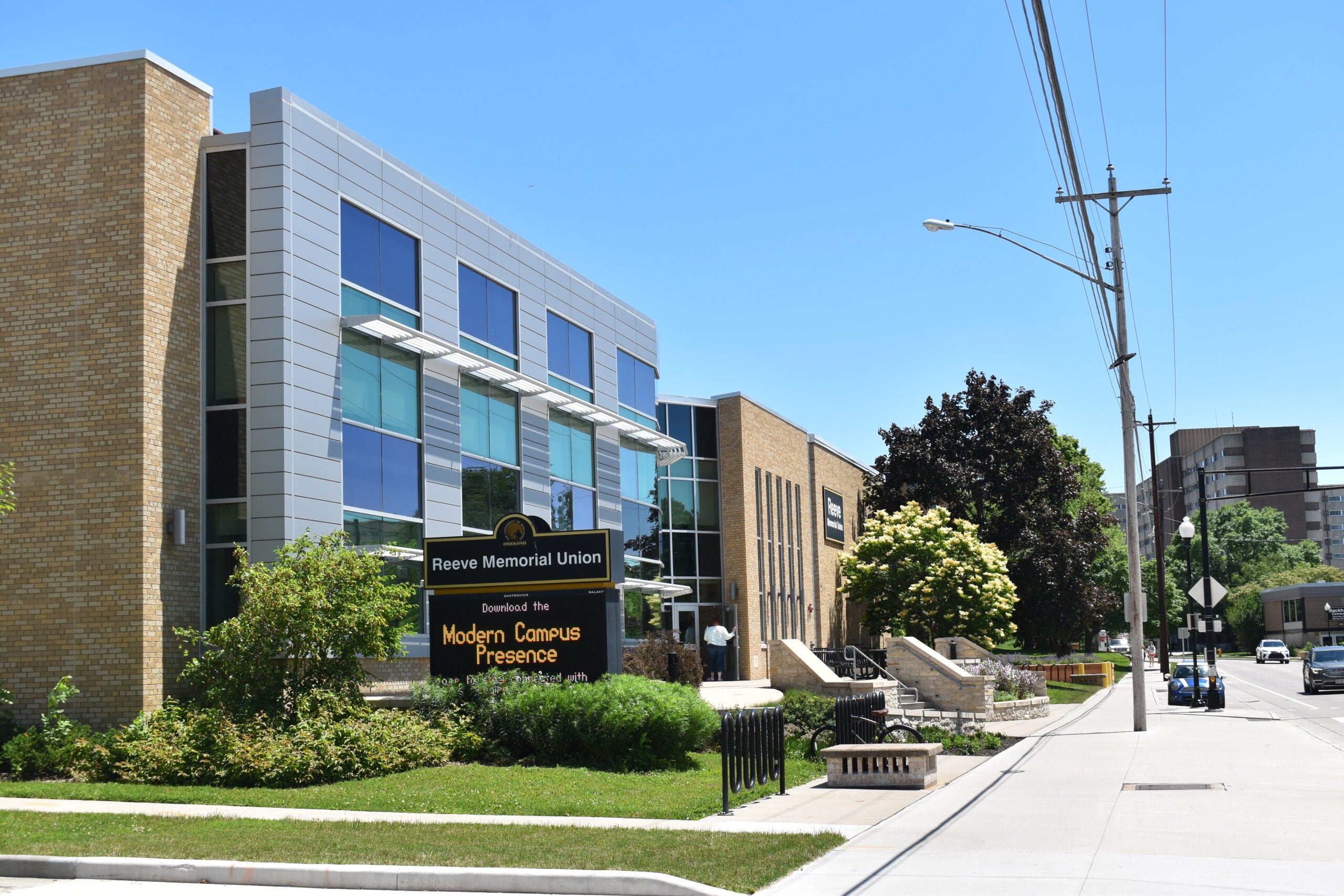As most state universities in Wisconsin continue to deal with declining enrollment, the University of Wisconsin-Madison received a record 63,537 applications for just 7,996 open slots in the fall 2023 freshman class.
The number of freshman applications sent to the state’s flagship university has grown by 114 percent over the past decade. The number of new students admitted this year is down slightly from last year’s record of 8,635. A statement from the university noted the decrease was due to “the university purposely reducing the overall size of its freshman class by hundreds.”
UW-Madison Vice Provost for Enrollment Management Derek Kindle told Wisconsin Public Radio the campus’s academic reputation and word of mouth recommendations from current and former students are the main drivers of the uptick in enrollment.
News with a little more humanity
WPR’s “Wisconsin Today” newsletter keeps you connected to the state you love without feeling overwhelmed. No paywall. No agenda. No corporate filter.
Kindle said UW-Madison had the same enrollment goal of 8,100 students this year and in fall 2022. Last year, he said, the university was surprised to see a record 8,635 first-year students enroll.
“And because of that number, we knew that we really had to control for a much smaller class, which means we had to offer fewer spots in the class to students because we really wanted to be sure we didn’t go over that number,” Kindle said.
Among new freshmen this fall, around 48 percent of the students came from Wisconsin, while students from Minnesota participating in a tuition reciprocity agreement account for around 10 percent of the total.
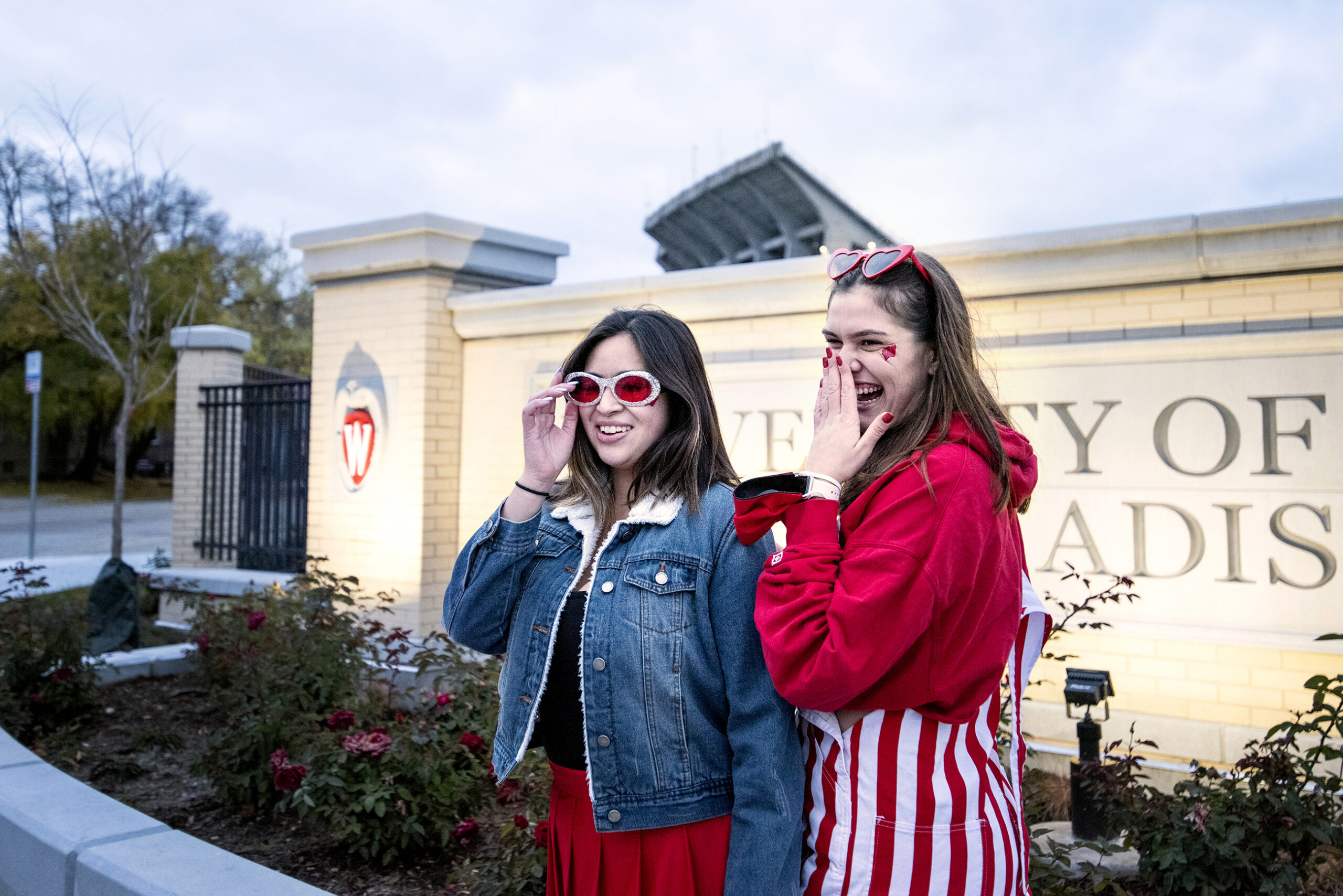
Around 54 percent of the new class is female and around 46 percent is male.
The number of Hispanic enrollees was unchanged, at 797, from fall 2022. The number of Black and Asian enrollees declined slightly from the previous year. Still, the overall percentage of new students categorized as “underrepresented students of color” hit a new high of 17.8 percent as a result of the smaller freshman class. White students make up 58 percent of this year’s freshman class.
In June, the U.S. Supreme Court ruled that colleges can no longer consider an applicant’s race when deciding which students to admit. The ruling applies to all public and private colleges.
Kindle said the ruling didn’t have any effect on admissions this year because it came more than a month after the campus’s May 1 deadline for students to commit to enrolling.
UW-Madison’s overall student body has grown to more than 50,662, the first time enrollment has surpassed 50,000 in the campus’s 175-year history. That’s more than twice the number of students of any other UW System campus and accounts for around 31 percent of the total enrollment at the state’s 13 universities.
Wisconsin GOP members have enrollment critiques
Republican lawmakers have become increasingly vocal in recent years about complaints from constituents saying their high-achieving children have been rejected by UW-Madison. In response, GOP legislators introduced a bill this summer to require the flagship and all other state universities to admit all Wisconsin high school graduates ranked in the top 5 percent of their class.
During a public hearing on the bill, Republicans insinuated that UW-Madison is focusing more on race than academic achievements when admitting students. University data shows around 62 percent of Hispanic applicants were admitted this fall, which is down from 69.4 percent in 2021. The admission rate of Black students was around 51 percent, which is down from a high of 63.3 percent in fall 2021. Around 51 percent of Asian applicants were admitted, which is down from a high of 72.2 percent in 2021. Just more than 41 percent of white students were accepted into the university, which is down from 58.8 percent in 2021.
GOP lawmakers have also claimed the university is rejecting Wisconsin graduates in favor of out-of-state applicants who pay more in tuition. UW-Madison enrollment data shows the percentage of Wisconsin residents admitted was around 61 percent this fall, which is slightly higher than it was the same time last year. The admission rate for out-of-state students from the U.S. and beyond was a combined 75 percent.
Kindle said UW-Madison has exceeded enrollment goals set by the UW System Board of Regents for students from Wisconsin every year since 2015.
If UW-Madison significantly boosted the enrollments from a declining pool of potential students from within the state, Kindle said, other schools could be harmed as a result.
“We also have to be really sensitive that we are one of several institutions in the UW system and throughout the ecosystem of higher education opportunities within the state,” Kindle said.
Wisconsin Public Radio, © Copyright 2026, Board of Regents of the University of Wisconsin System and Wisconsin Educational Communications Board.
